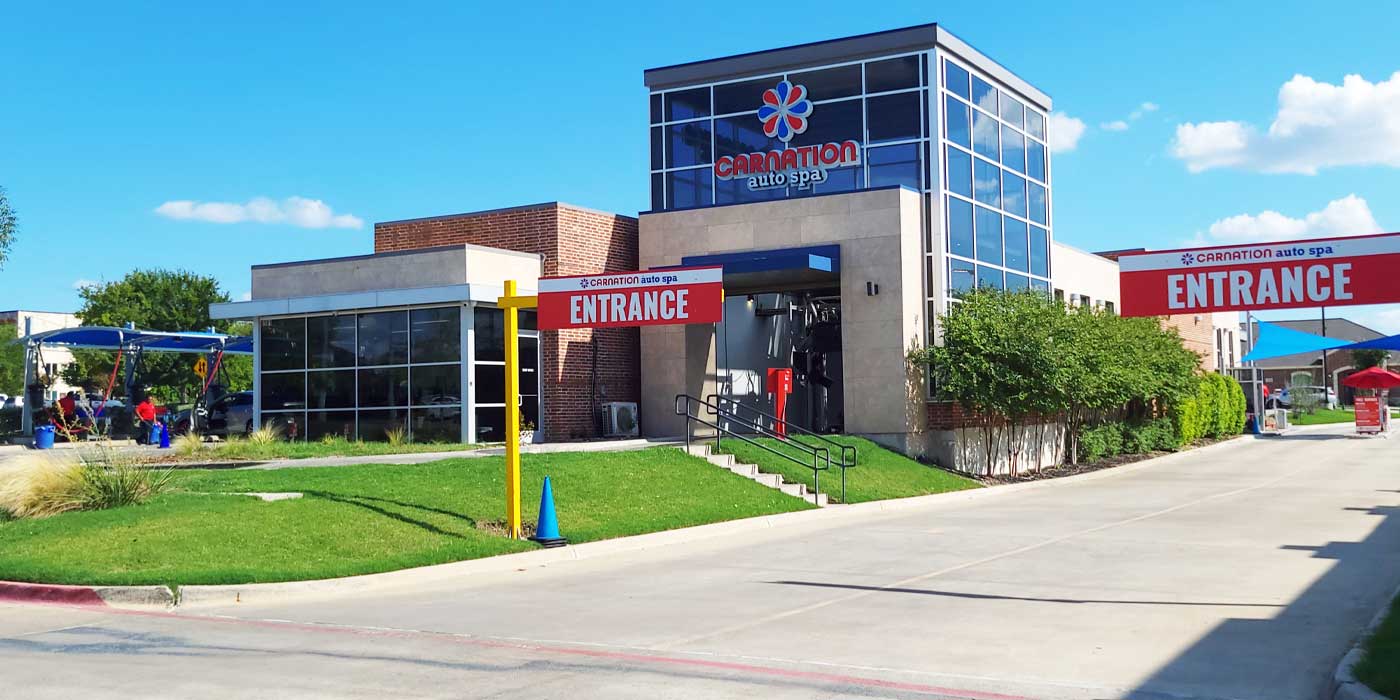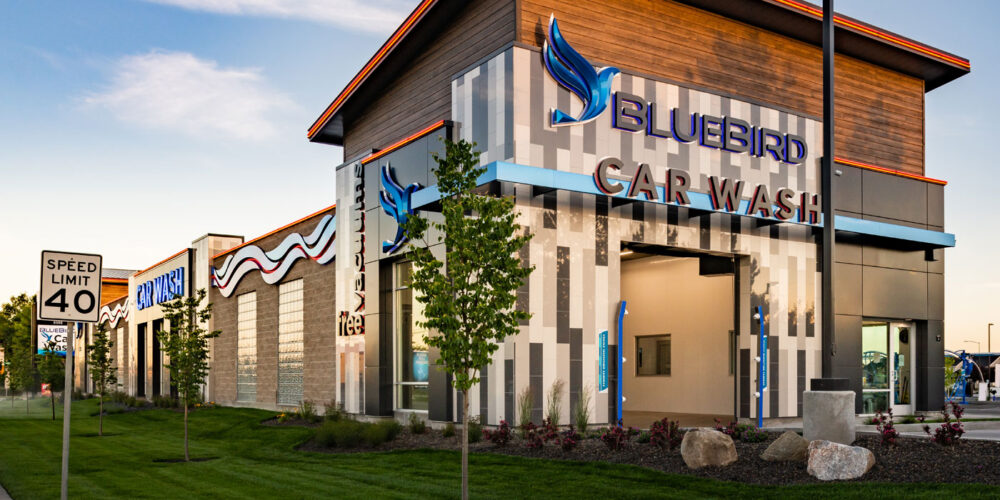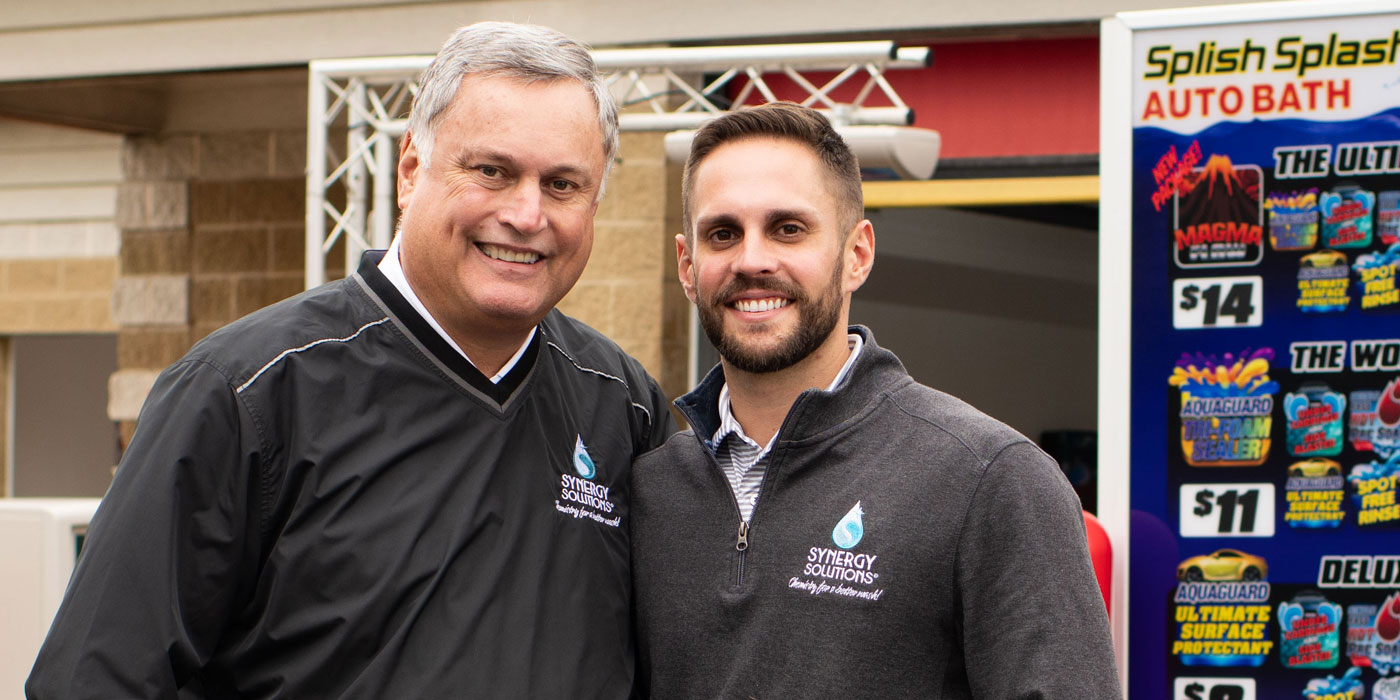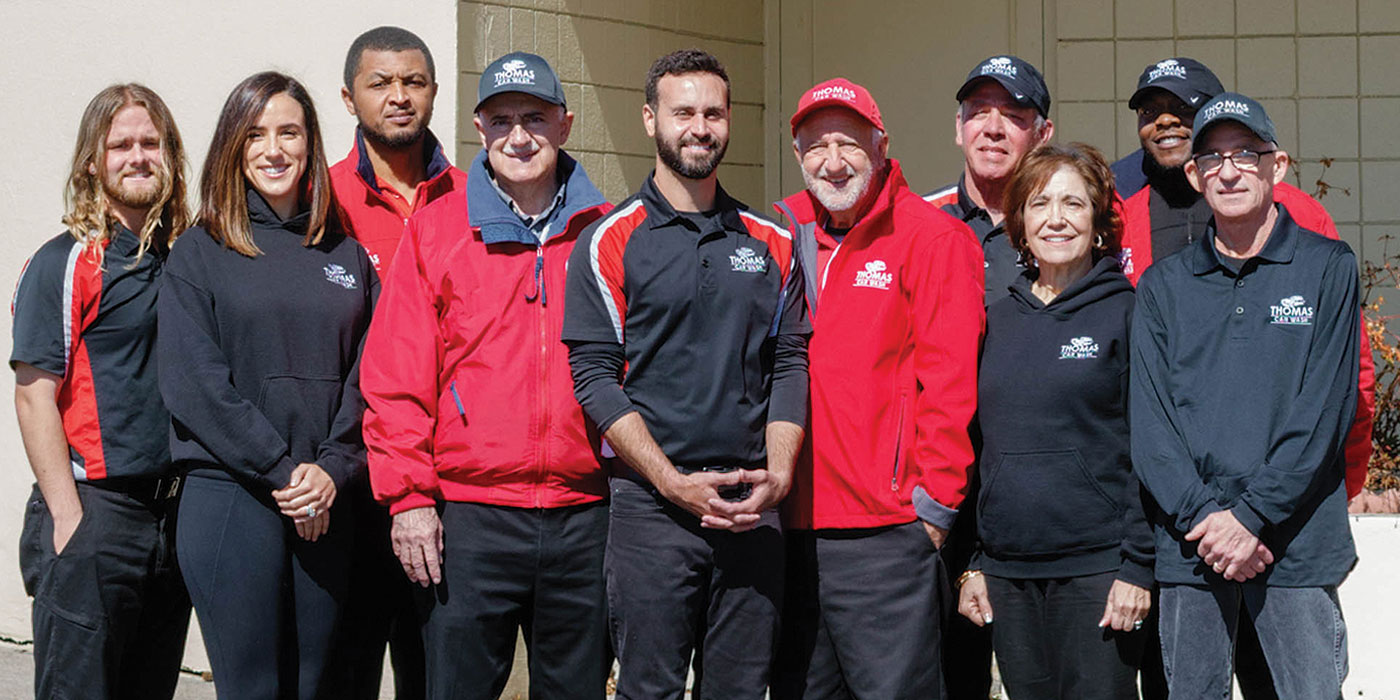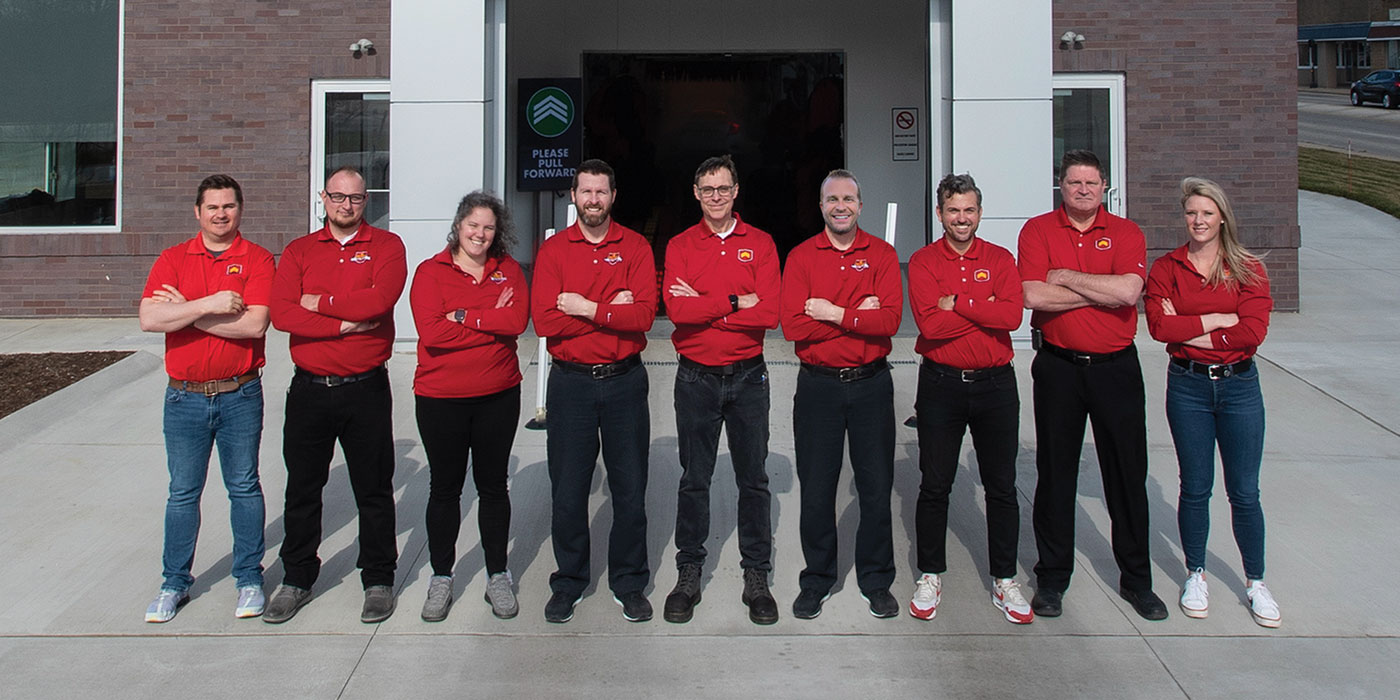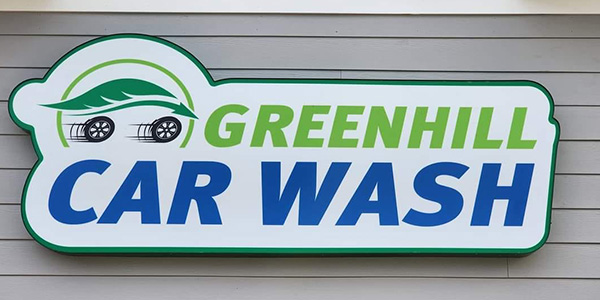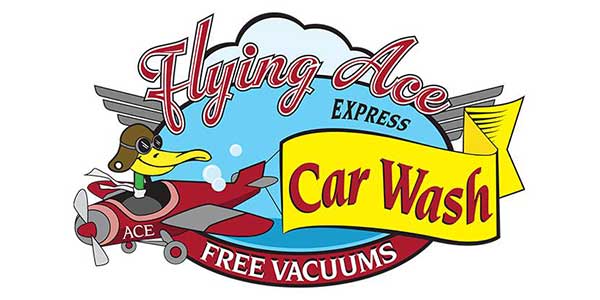The professional carwash industry continues to see an explosion of growth and expansion among the industry’s leading chains. For perspective, our 2011 Top 50 U.S. Conveyor Chain List accounted for only 974 conveyor locations. This year’s list shows that the top 50 conveyor chains in our industry now operate over 3,700 locations.
The top-heavy trend that we’ve been seeing for the past few years continued this year as more chains are growing to triple-digit numbers. For this year’s list, 12 chains have 100 or more year-end projected locations. Last year, only the top five met this mark and five years ago only two companies had over 100 conveyor locations.
As many in the industry are already aware, a convergence of trends has occurred over the past decade plus, including the emergence of the express exterior offering, membership and readily available funds, that has contributed to this remarkable growth. But, what’s the next decade look like?
We reached out to several industry insiders to gauge how the headwinds of 2022 affected the conveyor carwash segment and how operators are now building their growth strategies moving forward.
The state of combining platforms
With private equity and large investors fueling most chains’ growth in this segment, widespread consolidation helped increase the number of locations for many companies found on our list. However, as the pool of interested sellers with few locations continues to dwindle, a slowdown in mergers and acquisitions (M&A) seemed inevitable.
Jeff Pavone, founding partner at Amplify Car Wash Advisors, notes that 2022 was a “banner year” for M&A activity. “Last year was a great year, but 2022 was even better,” he notes. Pavone calls what he expects to happen next year a “reset” as the market moves into “carwash M&A 2.0.”
With such contributing factors as aggressively higher interest rates and tightening credit, sellers’ valuations are decreasing.
“The cost of debt is about 60% more than it was a year ago,” educates Pavone. “That fact changes everything, including the returns for sellers. When you have those dynamics, it results in more thoughtful buying and being much more attentive on what you’re buying and how much you’re paying for it. Valuations have for sure peaked and they’re starting to come down.”
While the conveyor segment was lifted in recent years by such contributing factors as readily available capital and even stimulus money from the government, negative headwinds of looming inflation, pending recession, and higher costs to borrow have diminished buyer and investor enthusiasm.
According to John Roush, CEO of Express Wash Concepts, which is part of the EWC/Club: Wildcat Car Wash Platform (ranked No. 4 on this year’s list), the mood of investors has definitely shifted. “In the last four to six months, ‘cautious’ has been a big word,” he says.
In addition to the external challenges noted by Pavone, Roush attributes part of this caution is coming from investors who are figuring out that operating a carwash business — the right way — and scaling it is not as easy or as lucrative as they imagined.
Costs are building up
Labor and material shortages and high inflation equal higher costs to build a carwash. And, even though the proactive operators on our list are shifting more toward new build over acquisition, it’s still coming at a hefty price tag.
“We used to build carwashes for about $2.2 million on the land; that’s crept its way to probably an average for us in the $3 million range … and we’re still even a million dollars probably below market average in the industry,” reports Roush, adding that in addition to these initial costs to build, such variables as payroll and utilities are “through the roof.”
Even as the costs to build are increasing, the chains that are better at greenfield development over acquisition are the ones that are expected to keep moving up our Top 50 list in coming years, say the experts.
“The Top 50 list will probably include mostly construction developer-driven companies moving forward and not the companies that have grown mostly through M&A. The chains built through M&A activity will need to play catch up with the developers. That M&A business is really expensive and risky right now,” asserts Roush.
This is not to indicate that industry insiders are ruling out a major acquisition in the future. Moving forward, experts predict that deals will be done more out of necessity, such as wanting to enter a certain market or build out in an existing market. Still, the clear shift in growth strategies for many is new build over acquisition.
“The majority of big players are moving toward building out greenfields because they can build far cheaper than they can buy, and they can build in a location of their choosing,” confirms Pavone.
The race to 1,000 locations
Will our industry have a conveyor operator with 1,000 or more locations within the next decade? Those interviewed for this article say it’s inevitable but it won’t be easy. As mentioned, the chains that focus on new development over acquisition in the coming years will be the ones in the best position to reach this mark first.
“For one or more of the large carwash chains to reach 1,000 locations over the next few years, I think there will have to be consolidation at the top end of the Top 50 list,” educates Colin May, managing director of Car Wash Advisory. “The growth of most of the largest chains has come through acquisition of primarily small and medium-sized carwash portfolios of one to 30 sites, combined with construction of new greenfield sites more recently. In my opinion, a 1,000-location carwash chain is going to be the result of one of the big companies buying another or making multiple medium-to-large 50-100-plus site
acquisitions.”
While part of our list’s intrigue comes from looking back and seeing how much the conveyor segment has changed over the years, people who follow the list each year use it to predict what’s coming down the road.
Pavone believes within the next four years, a chain or a few might have 1,000 locations. He also offers some predictions for the top five and the top 10. “We’ll see a changing of the guard at the top 10, but it will come on the back of greenfield development. Also, I believe it’s reasonable to predict that the minimum requirement to make the top five will be 500 locations within the next few years,” prognosticates Pavone.
His outlook for smaller operators is bleaker.
“The negative headwinds of high inflation, elevated operating costs and pinched retail sales, which have gone down 5% to 10% for the average operator, combined with the cost of capital going up 60% and multiples going down on an exit sale … it makes this business more sensitive to good operations to make it through and that’s going to squeeze out a lot of mom-and-pops,” explains Pavone.
Quality over quantity
The beauty of our list is its simplicity. Our listings only include company name, site of first location or headquarters, website and projected year-end number of conveyor locations. As some have pointed out in the past, we do not track revenue and other intangibles. But, at least one chain on the list is tracking the intangibles, like quality over quantity. After all, as Pavone alluded to, only the strong will flourish as our industry matures.
“Every year, I wait for this list to come out and use it as one of my key motivators. Because I’m a growth guy and I like to build and develop, I love seeing where our company stood and how far we’ve moved up,” reveals Roush. “In the last couple of years, I’ve really thought more about how many quality locations are included in our number.”
Roush advises his fellow operators on the list to follow suit. He believes that it’s not the race to 1,000 locations that the industry should focus on, but rather operating the highest number of quality sites.
“Many of the companies on the list, even at the very top, are seriously thinking about that in a smart way and if they’re not, they will be soon because their financials are going to force them to think that way,” Roush continues. “The best operators will continue to move up the list but they’ll do it with quality.”
Unfortunately, some investors are learning this important lesson in real-time. Over the years, veteran operators have warned about saturation in certain markets. While many say that there is space and a piece of the pie for everyone, others are saying it’s too close for comfort and the poor operating locations are paying a severe price.
“The good operators are good for a reason and those are the guys that you don’t mess with,” warns Roush. “You can’t mess with them and you shouldn’t dream your way into being within a few miles away from a great operator and think you’re going to be fine — you won’t be.”
If you’ve invested in the industry and aren’t seeing the results you expected, it’s time to temper expectations and prepare for operating a tough business with compressed margins or consider selling or partnering with a reputable chain. Many of today’s leading conveyor chains understand operations and have decades of industry experience. Additionally, many of the platforms on our list offer several post-sale options for sellers, including joining the company’s management or operations team.
“Good operations is one thing that is so overlooked in this industry. There are people who get it and people who are on auto pilot. When it comes to operations, you better have your ‘A game’ moving forward or do yourself a favor and get out of this business,” adds Pavone.
State of operators
Although the number of top 50 locations continues to trend upward each year, the operator segment is still considered fragmented and will be for the foreseeable future. May estimates that the largest operators each account for less than 5% market share.
“While it appears consolidation will continue for many years to come and the big chains will continue to get bigger, the total overall number of conveyor carwash locations will also grow due to the large amount of new industry entrants rapidly building new carwash sites across the country,” says May. “Even though the total locations for such chains as Mister and Zips continue to increase each year, their percentage of the total market may not be increasing nearly as fast. We are very far away from having a ‘top heavy’ carwash industry with five to 10 dominant brands.”
As the operators on our list shift growth strategies and focus in on quality operations over simply growing their number of locations, it will be interesting to track the Top 50 U.S. Conveyor Chain List moving forward. As of now, those we speak with on a regular basis believe there is still plenty of room for this segment of our market to grow. However, the requirements to do so will be skills in operations and, at least for now, cavernous pockets.




